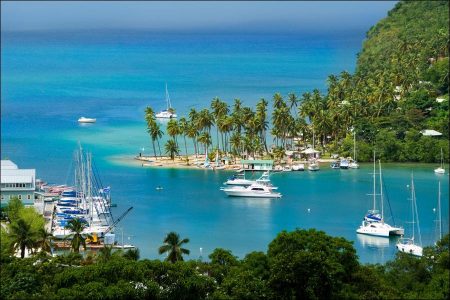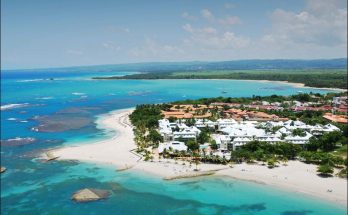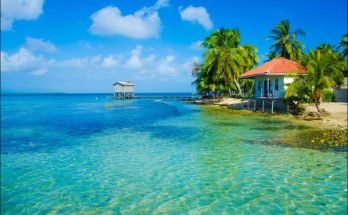Saint Lucia (Listeni/seɪnt ˈluːʃə/; French: Sainte-Lucie) is a sovereign island country in the eastern Caribbean Sea on the boundary with the Atlantic Ocean.[5] Part of the Lesser Antilles, it is located north/northeast of the island of Saint Vincent, northwest of Barbados and south of Martinique. It covers a land area of 617 km2 (238.23 sq mi) and has a population of 174,000 (2010). Its capital is Castries.
The French were the island’s first European settlers. They signed a treaty with the native Carib Indians in 1660. England took control of the island from 1663 to 1667. In ensuing years, it was at war with France 14 times, and rule of the island changed frequently (it was seven times each ruled by the French and British). In 1814, the British took definitive control of the island. Because it switched so often between British and French control, Saint Lucia was also known as the “Helen of the West Indies”.
Representative government came about in 1840 (with universal suffrage from 1953). From 1958 to 1962, the island was a member of the Federation of the West Indies. On 22 February 1979, Saint Lucia became an independent state of the Commonwealth of Nations associated with the United Kingdom.[5] Saint Lucia is a mixed jurisdiction,[6] meaning that it has a legal system based in part on both the civil law and English common law. The Civil Code of St. Lucia of 1867 was based on the Quebec Civil Code of 1866, as supplemented by English common law-style legislation. It is also a member of La Francophonie.[7]
The island nation celebrates its independence every year with a public holiday. The financial sector has weathered the global financial crisis, but the recession has hurt tourism.
Views: 132



